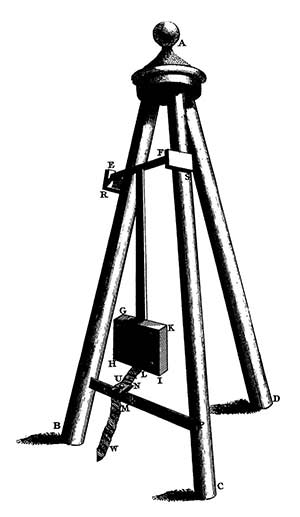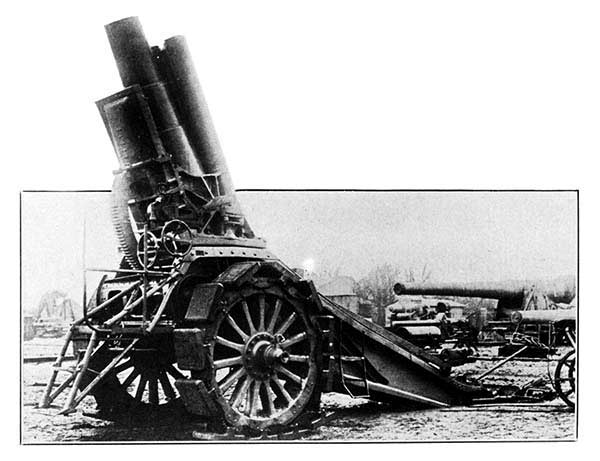Benjamin Robins, a British artilleryman and member of the Royal Society, began a study of fortifications, hydraulics and ballistics in the 1730s. While studying ballistics, he reached important conclusions about flight and published one of his books, New Principles of Gunnery in 1742. In it, he outlined his research that essentially formed the basis for all subsequent work on the theory of artillery, projectiles and aerodynamics.
Robins was very disappointed with the performance of the guns of the day, especially their accuracy. The accurate range of most guns was a maximum of 300 to 400 yards, or 275 to 365 meters, and he was certain that they should perform better. To determine the cause of the poor performance and discover what could be improved, Robins began a systematic study of the projectile in motion. To conduct this research, he invented a device called the ballistic pendulum. Another technique he employed to study the trajectories of projectiles was to shoot them through a series of paper screens so that their actual paths could be determined.

Robins' Ballistic Pendulum, 1805.
Drawing: Benjamin Robins, Esq. F. R. S.
From: New Principles Of Gunnery: Containing - The Determination Of The Force Of Gunpowder; And An Investigation Of The Difference In The Resisting Power Of The Air To Swift And Slow Motions. With Several Other Tracts On The Improvement Of Practical Gunnery.
Digitized by: Google.
Robins' ballistic pendulum was simply a piece of wood, the bob, mounted on a tripod so that it could swing freely. The projectile being tested was fired into the pendulum bob. By knowing the exact weight of the piece of wood and the projectile being tested, the velocity of the projectile could be determined by measuring how far the pendulum moved. By moving the pendulum further away from the gun in successive steps, the decline in the speed of the projectile could be measured. The ballistic pendulum invented by Robins continued to be the preferred method for assimilating ballistic data until after World War II.
Robins was the first person to pursue a modern scientific study of flight that took into account the effects of aerodynamic and physical phenomena on a body in motion. While others, such as Galileo, had acknowledged that air influenced the flight of objects in their earlier research, they discounted its effect as negligible. Robins determined that the effect of aerodynamic drag upon projectiles was substantial. He also correctly concluded that the spherical projectiles of the period were not the ideal shape and recommended elongated projectiles with a center of gravity near the leading end. The projectile shape that he concluded would be most ideal was similar to an egg or teardrop, a shape that would reappear in aircraft design nearly 200 years later. He also realized the advantages of rifling for cannon. Robins' work was not fully appreciated until more than 100 years after his death.
Gunnery methods of this era stayed nearly the same until about the mid-1800s. There were several substantial advances such as the cast iron cannon and then the cast steel cannon by about 1847, but in many cases, these developments were viewed as a joke by the military leaders of the day. In fact, the exceptional innovation of the first cast steel cannon by Alfred Krupp could not be sold and eventually was given away. However, Alfred Krupp eventually managed to sell cast steel cannon in great numbers.

Krupp Siege Howitzer, 11.023 Inches (28 Centimeters) #2748 NOV. 1914.
Department of the Army. US Army Materiel Command.
Office of the Chief of Ordnance. Watertown Arsenal.
National Archives and Records Administration
National Archives at Boston; Waltham, Massachusetts.